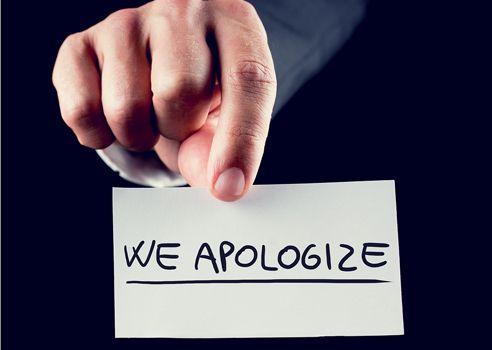Reading time: About 1 minute
There’s an art to saying you’re sorry. Here are some guidelines for how to apologize…
I had an important interview scheduled for this week, but the person’s Executive Assistant emailed me to re-schedule it. The new time she suggested wasn’t convenient for me — I had another call booked — but the interview was important, so I decided to re-work my schedule. As soon as I made the changes in my Google calendar, the assistant phoned me to admit she’d made a mistake. In fact, the original time was still okay.
Did she apologize? No. She laughed in an “aren’t-I-an-adorable-person” kind of way. She was just “disorganized” she suggested and showed no concern for any inconvenience to me. The distaste I felt for this interaction caused me to reflect on corporate apologies (or, more often, the lack of them.)
Here are some tips if your company ever needs to say it’s sorry:
- If you need to apologize, apologize. Delaying will not make this task any easier.
- Ensure your apology is honest. Don’t add escape hatches and defences. Don’t say, We were wrong but it was wrong of the public to make a big deal out of it. This will only make things worse.
- Use the active voice. “We did this,” is far stronger, and more effective than “mistakes were made.” People are understandably scornful of apologies that try to ‘fuzzify’ the responsibility.
- Own the offence. “I am sorry I offended you” is infinitely better than “I’m sorry if you feel offended,” because the latter appears to put the responsibility on the complainant(s) rather than you.
- Don’t try to be funny or clever. You’re apologizing, not making a joke. Treat it with the seriousness it deserves.
- Don’t dilute your apology. Don’t add it into something else, don’t sweep by it, going quickly on to other topics. Be clear about what you’re doing and why.
Apologizing isn’t easy but you’ll earn the respect of your customers if you manage to do it well.

